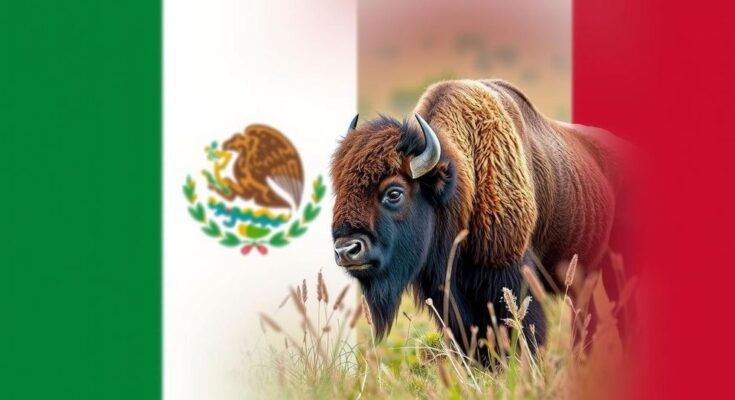The U.S. Department of the Interior has signed an agreement with Canada and Mexico to enhance the conservation of American bison. This collaboration will focus on preserving bison populations, restoring ecological processes, and honoring Indigenous connections. Through a collective commitment, the nations aim to document their efforts and strengthen conservation initiatives while addressing bison’s historical range and current ecological challenges.
The U.S. Department of the Interior, in collaboration with Canadian and Mexican agencies, has initiated a fresh agreement aimed at bolstering the conservation of the American bison. This partnership, formalized through a Letter of Intent, commits the countries to concerted efforts in bison preservation, ecological restoration, and the acknowledgment of the species’ historical significance to Indigenous communities. The agreement was established during the recent Trilateral Committee for Wildlife and Ecosystem Conservation and Management meeting in San Diego. Bison, once abundant across North America, now linger near extinction, with numbers dwindling from millions to a mere thousand following European colonization. Secretary Deb Haaland emphasized the importance of international collaboration, stating, “While the overall recovery of bison over the last 130 years is a conservation success story, significant work remains to ensure that bison will remain a viable species.” The Letter of Intent fosters coordination among Canada, the U.S., and Mexico to promote effective conservation practices, emphasizing transparency and streamlining reporting between the nations. The initiative supports creating joint work plans and will enhance joint research on bison ecology. This agreement builds upon the Interior Department’s previous domestic efforts and initiatives, such as the Grasslands Keystone Initiative, which aims to restore bison populations across the country. Recently, a Secretary’s Order was issued with a $25 million investment to streamline scientific research and integrate Indigenous Knowledge into bison conservation efforts. A Bison Working Group is also being formed to develop a shared stewardship plan. Historically, the American bison grazed across vast landscapes, from Mexico to Alaska, yet invasive pressures have left them inhabiting less than 1% of their original range today. Presently, approximately 31,000 bison are under stewardship across North America, fostering conservation of the grassland ecosystems they support and revitalizing Indigenous cultural traditions associated with these majestic creatures.
The American bison holds a key place in North America’s natural history and Indigenous culture. Once numbering in the millions and roaming freely, the species faced near extinction due to overhunting and habitat loss after European settlers arrived. Now, through concerted international efforts, the U.S., Canada, and Mexico aim to revive and protect this iconic animal, restoring its rightful place in the ecosystem and honoring its significance to Indigenous peoples.
The recent agreement among the U.S., Canada, and Mexico marks a pivotal step in the fight to conserve the American bison, emphasizing collaboration, ecological restoration, and respect for Indigenous heritage. As these nations unite their efforts, they endeavor not only to recover bison populations but also to integrate traditional knowledge, ensuring that this magnificent creature can roam the land once more. The future, illuminated by unified action, holds promise for both the bison and the ecosystems they inhabit.
Original Source: www.doi.gov



